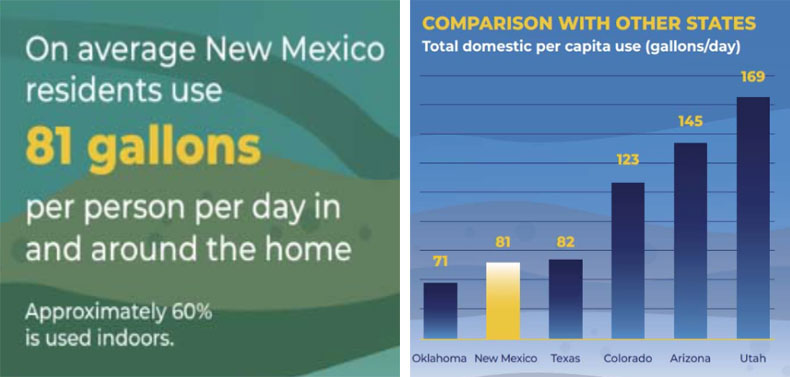Low-Impact | Recycling | Sustainable
The average American uses 80 – 190+ gallons of water per day. Less than half is used for cooking or drinking, all of it is most likely treated potable water from the local municipality or a well (treated with chlorine, etc.).
Potable Water: water that is safe to drink or to use for food preparation, without risk of health problems.
Alternatively, water can be ‘harvested’ or ‘caught’ from the sky then gathered and stored in cisterns. This ‘catch water’ is then filtered to make ready for human consumption and use through filters.
The cisterns can be buried, preferably above ground or integrated into the interior of the building and used as a heat sink and optionally have a small waterfall incorporated.
The Cistern(s) can be ‘inter-tied’ to connect to municipal / well water so that when the cisterns get low, to a prescribed level, more water can be automatically added.


Important Note: Since the toilets all flush with treated greywater, the home itself needs much less water supply allowing catchwater to work in the high desert of Northern New Mexico.
- Water is caught from a roof with a potable surface that does not pollute the water caught from the sky.
- Then the water is channeled through gutters and silt catches into cisterns.
- Cisterns are sized to the local climate, buried and completely protected from the sun.
- Water from the cistern is then gravity-fed into a WOM: Water Organizing Module with pumps and filters.
- The pump pushes the water into a pressure tank to supply code required water pressure throughout the building.
- The filters clean the water for general household use.



Groundwater extraction is kept to a minimum to preserve local aquifers and prevent environmental degradation. The community has planned for fewer than three emergency-use wells, each carefully positioned to minimize disruption to the surrounding environment. These wells are designed as a backup system to ensure resilience during prolonged droughts or unexpected water supply interruptions.
Key principles guiding water management in the development include:
- Water conservation: Encouraging mindful use of water through community education and incentives for water-saving practices.
- Greywater reuse systems: Treating and recycling water from sinks, showers, and washing machines to irrigate community gardens and landscapes.
- Natural filtration systems: Using biochar, sand, and other materials to filter water and ensure safety and quality.
- Resilient infrastructure: Designing systems to withstand the impacts of climate change, including droughts and severe weather and political events.
This integrated approach ensures that the Pangea Community remains environmentally sustainable while fostering a harmonious relationship with the local ecosystem and the cultural heritage of Taos, New Mexico. By prioritizing collaboration, conservation, and resilience, the community sets a precedent for future developments seeking to align modern living with sustainable practices.




